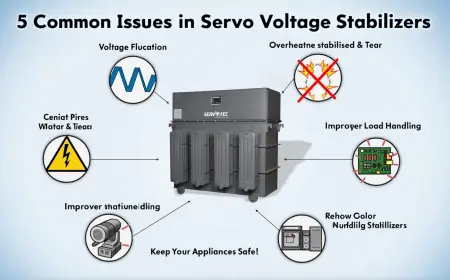The Rise of Planter Bags: Transforming Urban Gardening and Sustainable Practices
Gardening has transformed significantly over the years, especially with the changing dynamics of urban living. As more people migrate to cities, the quest for green spaces has led to innovative gardening solutions. One such solution that is gaining remarkable popularity is the use of planter bags. These versatile containers are revolutionizing the way individuals approach gardening, making it more accessible and sustainable. In this Mahira Polyglobal LLP, we will delve into the features, advantages, and practical applications of planter bags, while discussing their impact on modern gardening practices.
Understanding Planter Bags: What They Are and How They Work
Plants grow bags are lightweight and breathable containers designed specifically for potting plants. Made from durable fabric, they allow roots to breathe and promote healthy air circulation, which is essential for optimal plant growth. The structure of these bags ensures proper drainage, helping to prevent waterlogging—a common issue with traditional pots. By facilitating airflow and managing moisture levels, planter bags create an ideal environment for roots, effectively minimizing the chances of root rot and other diseases.
These innovative gardening tools come in various shapes and sizes, allowing gardeners to select the appropriate bag size based on the plant type and available space. From small bags suitable for herbs and flowers to larger ones designed for vegetables, sailor or potato bags, there’s a plant growing bag for every gardening need. This versatility makes planter bags an excellent choice for both home gardeners and agriculture enthusiasts, enabling them to cultivate a wide range of plants outside or indoors.
The Benefits of Using Fabric Planter Bags
The advantages of Grow bags online extend far beyond their innovative design. One of the foremost benefits is their ability to promote healthy plant growth. The breathable fabric allows for air pruning of roots, which encourages them to grow outward rather than curling around the edges of the container. This results in a more fibrous root system that can efficiently absorb nutrients and water, ultimately leading to healthier plants.
Furthermore, planter bags are exceptionally adaptable and easy to manage. They can be used in various settings, including urban homes, balconies, patios, gardens, and even rooftops. Their lightweight nature means they can be moved as needed, allowing for flexible layouts in gardens. Additionally, for gardeners who may have physical limitations, these bags are easier to lift and handle compared to traditional clay or ceramic pots.
Another compelling advantage of planter bags is their eco-friendliness. Many fabric bag manufacturers use recycled materials in their production, contributing to sustainability efforts and reducing plastic waste. The recyclability of these bags also makes them a greener choice compared to conventional plastic pots. When they outlive their purpose, planter bags often decompose more sustainably, further enhancing their appeal to environmentally conscious consumers.
Selecting the Right Planter Bag for Your Garden
When considering planter bags for your garden, there are several essential factors to keep in mind. First, consider the material from which the bag is made. Most quality planter bags use non-toxic, UV-resistant, and durable fabric that can withstand various weather conditions. Look for bags that are double-stitched for additional strength and durability, as they will typically last longer than lower-quality alternatives.
Next, size is a crucial factor to consider. Selecting the appropriate size is vital for accommodating the root system of the plant you wish to grow. Smaller plants, such as herbs, can thrive in smaller bags, while larger vegetables and flowering plants require spacious growing bags. Checking the bags' dimensions before purchasing ensures that you provide adequate space for the root systems to flourish.
Lastly, don’t forget to consider drainage features. Effective drainage is key to avoiding water retention, which can lead to root rot. Most quality planter bags incorporate drainage holes or are designed with enough airflow to allow excess moisture to escape. Ensuring proper drainage will help maintain a healthy environment for your plants.
Planter Bags and Urban Gardening: Ideal Solutions for Limited Spaces
Urban gardening has gained immense popularity in recent years, driven by a desire to reconnect with nature amid busy city life. Plants grow bags are integral to this movement, allowing city dwellers to create beautiful and productive gardens in limited spaces. Balcony gardens, rooftop farms, and terrace gardening are facilitated by these adaptable containers, enabling residents to cultivate fresh produce and flowers right outside their doors.
Moreover, planter bags can be arranged in various configurations to maximize growing potential. Vertical gardening using modular bags enables gardeners to optimize space and create visually stunning displays of greenery. This innovative approach allows city residents to transform even the smallest balcony or patio into a thriving garden oasis, enhancing their quality of life while improving air quality and reducing urban heat.
The ability to grow plants in bags also means that urban gardeners can experiment with seasonal crops, growing vegetables and herbs that would otherwise require garden plots. The portability of planter bags encourages urban dwellers to engage in gardening year-round, accommodating shifting weather conditions and seasonal plants.
Maintaining Plants in Planter Bags
Caring for Garden bag for planting is relatively straightforward, benefiting both novice and experienced gardeners. To maintain healthy plants, regular watering is essential. However, due to the efficient drainage that planter bags provide, it’s vital to strike the right balance between keeping the soil moist and avoiding overwatering. Checking the soil with your finger to monitor moisture levels can help guide your watering routine.
Fertilization is another important aspect of maintaining healthy plants in growing bags. Depending on the plant type, using a well-balanced, organic fertilizer can provide the necessary nutrients for growth. Supplementing with compost can also be beneficial, as it enriches the soil with organic matter and enhances its overall structure.
Additionally, regular inspections for pests and diseases are essential. Fabric planter bags allow for better air circulation, thereby reducing the risk of fungal infections. However, keeping an eye out for common pests—like aphids and spider mites—remains crucial. If pests do appear, treating them swiftly with organic or neem oil solutions can help protect your plants without introducing harmful chemicals into your garden space.
Innovations from Fabric Bag Manufacturers
As the gardening market evolves, fabric bag manufacturers continue to innovate and expand their offerings to cater to an ever-growing audience. Some manufacturers are now producing biodegradable planter bags designed to break down naturally at the end of their life cycle, addressing the increasing consumer demand for sustainable gardening solutions.
Additionally, technology is making its way into the gardening space. For instance, some planter bags now come with built-in moisture retention technology, allowing soil to remain moist for longer periods. This feature is particularly advantageous for individuals who may not have the time to tend to their gardens regularly.
Moreover, the introduction of customizable planter bags provides gardeners with unique aesthetics and landscape designs. Consumers can choose colors, patterns, and sizes that resonate with their personal style, allowing them to create gardens that reflect their tastes and preferences while enjoying the practical benefits of planter bags.
Conclusion: Embracing Planter Bags for a Greener Future
The emergence of planter bags has transformed gardening, providing flexible, eco-friendly solutions to enthusiasts around the world. As urban spaces become more crowded and sustainability becomes a pressing concern, these innovative growing containers enable individuals to cultivate their own green spaces, regardless of the limitations of their environment.
From promoting healthy plant growth to simplifying maintenance, planter bags offer multiple advantages that cater to the needs of modern gardeners. As consumers grow increasingly mindful of their environmental impact, choosing planter bags made from sustainable materials enhances the gardening experience while contributing positively to the planet.
By embracing the potential of Manufacturer for bags, gardeners can navigate the urban landscape with creativity and sustainability in mind. The future of gardening undoubtedly lies in the hands of those who champion innovative practices, and planter bags represent a significant step toward a greener world.
Frequently Asked Questions
-
What types of plants are best suited for planter bags?
Planter bags can accommodate a wide variety of plants, including vegetables (like tomatoes and peppers), herbs (such as basil and mint), and flowers (like petunias and marigolds). Ensure that the bag size corresponds to the plant's root growth needs. -
How do I care for plants in planter bags?
Care involves regular watering, checking moisture levels, fertilizing as needed, and monitoring for pests and diseases. The porous fabric allows for excellent drainage and aeration, which helps maintain healthy plant roots. -
Are there biodegradable options for planter bags?
Yes, many fabric bag manufacturers are now producing biodegradable planter bags made from sustainable materials that decompose over time, providing an eco-friendly alternative to traditional fabric bags. -
Can I use planter bags for indoor gardening?
Absolutely! Planter bags are suitable for indoor gardening and can enhance your living space by incorporating greenery. Just ensure proper light conditions and drainage to maintain healthy plants indoors.
What's Your Reaction?
 Like
0
Like
0
 Dislike
0
Dislike
0
 Love
0
Love
0
 Funny
0
Funny
0
 Angry
0
Angry
0
 Sad
0
Sad
0
 Wow
0
Wow
0



















































